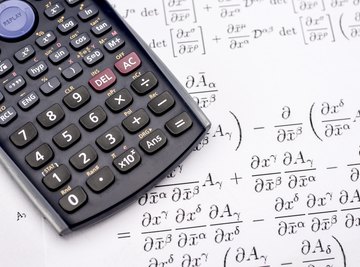
A normal curve is the name of the graph of the standard normal probability distribution, which is what people are (often unknowingly) talking about when they mention any "bell curve" showing where people or other variables stand in relation to some population average or mean.
A standard normal curve provides both a visual and a numerical representation of how a given variable is distributed across a population when the real-life situation represented by the function is known to have a symmetrical distribution in the population of interest (hence the "bell" shape). This could include IQ or height in males, which is as likely to vary toward one side of the mean as it is to the other, and it is also likely to vary by the same magnitude.
All normal curves and their associated data have certain attributes in common that allow for the generation of numerical tables that allow for the solving of area values in lieu of more complex mathematical computations.
The Standard Normal Distribution
In any normal distribution, by definition, just under 68 percent of data points fall within one standard deviation of the mean of the population or population sample. About 95 percent are within two standard deviations, and 99.9 percent lie within three standard deviations.
Each standard deviation mark is assigned an integer value about the mean (e.g., -3, -2, 1, 1, 2, 3) and assigned the variable z. This value, or z-score, can also take on non-integer values (e.g., -2.58).
Z-scores are used to determine the probability of an event occurring within a specified range of possibilities. For example, if you are told that the mean and standard deviation for IQ (intelligence quotient) are 100 and 20 points, making z = 0 for IQ = 100 and z = 1.0 for IQ = 120, and are asked to give the probability that a randomly chosen person will have an IQ of 140 or higher, you use a z-table to arrive at a solution.
The Area Under the Normal Curve
In most instances in mathematics, the area under the curve of the graph of an equation is found by manipulating that equation's unique elements directly, such as by integrating the curve between the x-coordinates of interest. With the normal curve, you instead look up either one or two numbers on a table called z-values and, if needed, perform a subtraction step.
The area under the entire normal curve, no matter its precise shape, is assigned the value 1.0. All partial areas under the normal curve are thus decimal numbers between 0 and 1 and can be converted easily to percentages by multiplying them by 100.
Z-tables allow for readings up to the hundredth place of the score to give areas to four or five significant digits. This is done by getting the tenth place on the left axis and then reading across the appropriate row to get the hundredth place.
- This explains why the proportion of the area to the left of z = -2.58 is .00494.
Normal Distribution: Area Between Two Points
Suppose that in a test with a mean of 80 and a standard deviation of 10, you want to know what percentage of the students had scores between 65 and 85.
You would start by finding the upper and lower z-scores. This is done by subtracting the mean from your upper bound and dividing by the standard deviation: (85 - 80)/10 = 0.50. You then find the lower bound in the same way: (65 - 80)/10 -1.50.
Now, you can assign area values to these z-scores by referring to the table. These values are 0.68916 for z = 0.5 and 0.06681 for z = 1.5. Each of these areas represents the area under the curve from the left "tail" to the x-value in question, so for the area between the two points x = 65 and x = 85, you subtract the lesser value from the greater to get 0.63135.
Thus 63.1 percent of the scores could be expected to fall within the range of 65 to 85 given a standard deviation of 10 in a normal distribution.
References
Resources
About the Author
Kevin Beck holds a bachelor's degree in physics with minors in math and chemistry from the University of Vermont. Formerly with ScienceBlogs.com and the editor of "Run Strong," he has written for Runner's World, Men's Fitness, Competitor, and a variety of other publications. More about Kevin and links to his professional work can be found at www.kemibe.com.
